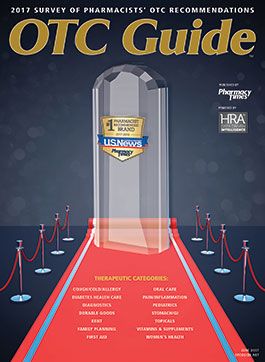Publication
Article
OTC Guide
Warts
Author(s):
Warts, also known as verrucae, are a common, benign dermatologic disorder caused by the human papillomavirus.
Warts, also known as verrucae, are a common, benign dermatologic disorder caused by the human papillomavirus.1 Warts affect an estimated 7% to 10% of the general population.1 Common warts (verruca vulgaris) are rough, irregularly shaped, and domed; they are characteristically found on the hands but can appear anywhere on the skin.1,2 Plantar warts (verruca plantaris) are skin-colored, callous-like lesions that appear on the soles of the feet.1 The peak time frame of occurrence is between the ages of 12 and 16 years, but plantar warts can occur at any age.1,2 Common warts and nonpainful plantar warts are the only types amendable to self-treatment.1,2 Nonprescription products for the treatment of common and plantar warts include the keratolytic topical agent salicylic acid or cryotherapy products that contain a combination of dimethyl ether and propane.1,2 Treatment goals include effective removal of warts without scarring as well as prevention of recurrence and sprea to other areas of the body or to another individual.1 Certain patients, such as those with diabetes, peripheral vascular disease, or immunodeficiency disorders, or those on immunosuppressive agents, should never attempt to use these products unless directed to by a primary care provider.1
Before recommending any OTC wart product, pharmacists should ascertain if self-treatment is appropriate and remind patients to adhere to the manufacturer’s directions. Because warts are contagious, patients should be advised to wash their hands before and after having direct contact with a wart; this can decrease transmission of warts to other areas of the skin, and/to other individuals. A separate towel should always be used to dry a wart to prevent further spread to other areas of the body. Patients should be encouraged to seek medical care if the wart remains after 12 weeks of therapy and there are signs of infection, swelling, pain, or irritation.1,2
References
- Adkins D. Warts. In: Krinsky D, Ferreri S,et al, eds. Handbook of Nonprescription Drugs. 18th ed. Washington, DC: American Pharmacists Association; 2015.
- Knopp Dlugosz C. Headaches. In: Knopp Dlugoz C. The Practitioner's Quick Reference to Nonprescription Drugs. Washington, DC: American Pharmacists Association; 2012.







